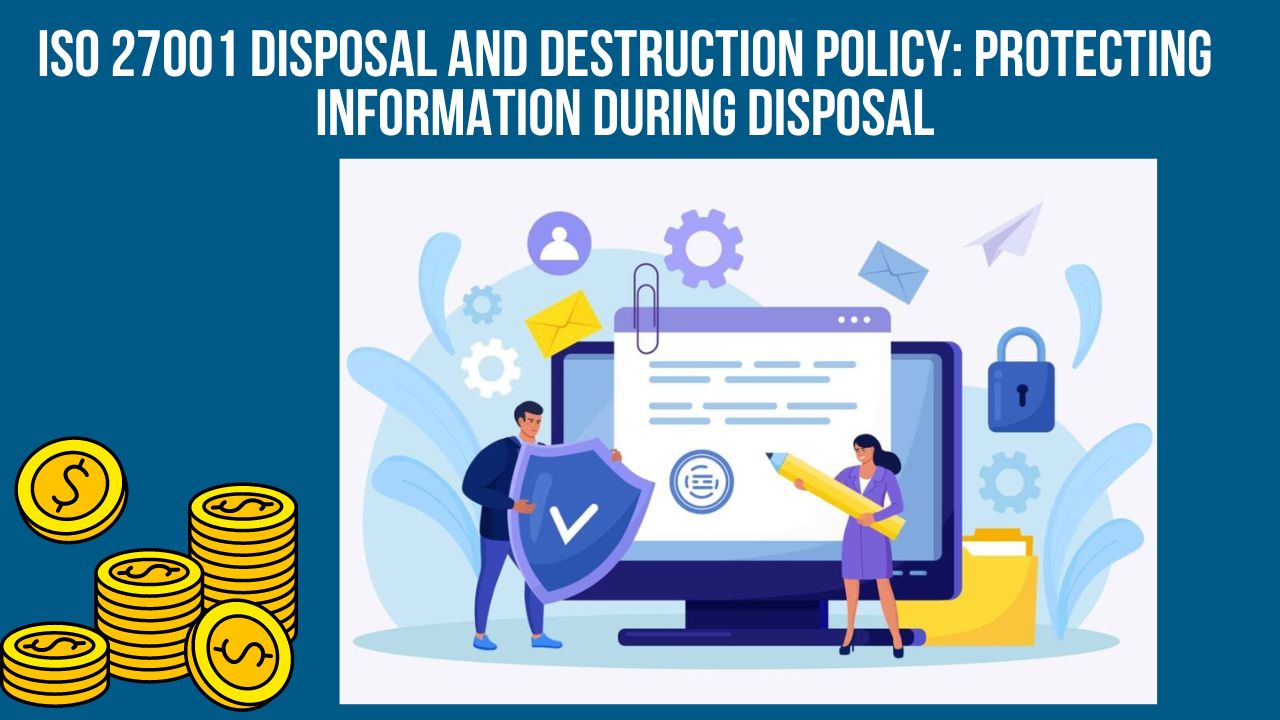Information security is a critical concern for organizations of all sizes. Data breaches can have devastating consequences, leading to financial losses, reputational damage, and even legal repercussions. To mitigate these risks, many organizations choose to implement an Information Security Management System (ISMS) based on the ISO 27001 standard.
ISO 27001 provides a framework for managing information security risks. While it doesn’t dictate specific controls, it does highlight areas where controls are necessary. One such area is the disposal and destruction of information assets. An ISO 27001 disposal and destruction policy ensures that sensitive information is securely removed from devices and media before they are discarded or reused.
This policy is crucial for complying with ISO 27001’s control 7.14 from Annex A, titled “Secure Disposal or Reuse of Equipment.” This control mandates that organizations verify the removal or secure overwriting of sensitive data and licensed software before disposal or reuse of IT assets.

What Does an ISO 27001 Disposal and Destruction Policy Cover?
An effective ISO 27001 disposal and destruction policy should address several key aspects:
- Scope: The policy should clearly define its scope, outlining which information assets (physical and digital) it applies to. This includes electronic devices (computers, laptops, servers, mobile phones), storage media (hard drives, CDs, DVDs), and paper documents.
- Classification of Information: The policy should establish a system for classifying information based on its sensitivity. This helps determine the appropriate disposal method for different types of data.
- Disposal Methods: The policy should outline the approved methods for disposing of information assets. This may include:
- Physical Destruction: For highly sensitive data, physical destruction methods like shredding for paper and degaussing or physical shredding for hard drives offer the most secure option.
- Data Erasure: For less sensitive data, secure data erasure software can overwrite existing information on storage devices, rendering it unrecoverable.
- Third-Party Services: Organizations can utilize certified data destruction service providers who specialize in secure disposal of electronic media.
- Procedures: The policy should detail the specific procedures for disposing of different information assets. This includes:
- Initiating Disposal: The process for requesting disposal of IT assets or paper documents should be clearly defined. This may involve an asset disposal form that captures details about the asset and the information it contains.
- Data Sanitization: The policy should specify the data sanitization methods approved for different types of media. This may involve overwriting data with random patterns or using software specifically designed for secure erasure.
- Verification: The policy should outline procedures for verifying that data has been successfully removed. This may involve using data erasure verification software or physical inspection of destroyed media.
- Record Keeping: The policy should mandate maintaining records of all disposal activities. These records should include details about the disposed asset, the disposal method used, and verification of data removal.
- Training and Awareness: The policy should emphasize the importance of secure disposal through employee training and awareness programs. Employees should understand their roles and responsibilities in adhering to the policy.
- Review and Update: The policy should be reviewed and updated periodically to reflect changes in technology, regulations, and organizational needs.
Benefits of an ISO 27001 Disposal and Destruction Policy
Implementing an ISO 27001 disposal and destruction policy offers several benefits:
- Enhanced Information Security: By ensuring the secure disposal of sensitive information, organizations can significantly reduce the risk of data breaches and unauthorized access.
- Compliance with Regulations: Many data protection regulations mandate organizations to securely dispose of personal data. A documented policy demonstrates compliance with these regulations.
- Reduced Environmental Impact: Secure disposal methods can help organizations minimize environmental impact by ensuring proper recycling or disposal of electronic waste.
- Improved Business Continuity: A robust disposal process ensures that sensitive information doesn’t end up on outdated or discarded equipment, potentially hindering disaster recovery efforts.
Conclusion
An ISO 27001 disposal and destruction policy is a vital component of any organization’s information security strategy. By outlining clear procedures for securely disposing of information assets, organizations can protect sensitive data, ensure compliance with regulations, and maintain a strong information security posture.
